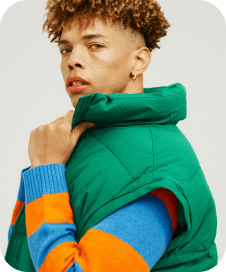Fashion Product Attribution
Accurately connect fashion shoppers with the relevant products they’re looking to buy
Lily AI drives 8-9 figure revenue uplift for fashion retailers and brands by dramatically boosting product discovery and optimizing search, everywhere.

From eCommerce and Search Advertising to SEO and GEO


Products must first be found to be sold. Lily AI enriches both consumer-facing and non-consumer-facing product content, including core attributes, details, and descriptions, as well as metadata and schema markup.
Home Product Attribution
Add exceptional depth to your home product catalog, and drive the traffic, conversion and revenues you’re looking for
Home furnishings brands can now easily manage a customer-centered language of product attributes that supercharge the entire retail value chain.

From soft furnishings to dining to decor, Lily AI is changing how home brands use enriched product data to drive new revenues


We work with home industry leaders to ensure that the language of their customers informs and enhances every point in their commerce ecosystem. We unlock new revenues and boost customer satisfaction by providing a depth and scale of product attribution that no other solution can match.
Beauty Product Attribution
Beauty is personal, and Lily AI knows how to connect beauty shoppers with the relevant products they’re really looking for
When consumers shop for beauty products, small details matter. Lily AI helps brands easily build an enriched beauty product taxonomy that accurately connects beauty shoppers with the relevant products they’re looking to buy, driving millions in top- and bottom-line impact.

From skincare to makeup to haircare, Lily AI is changing how beauty brands use enriched product data to drive new revenues


We work with beauty industry leaders to ensure that the language of their customers informs and enhances every point in their commerce ecosystem. We unlock new revenues and boost customer satisfaction by providing a depth and scale of beauty product attribution that no other solution can match.



Predictable demand forecasting and merchandising, built to tame the unpredictability of fashion, interiors, and beauty
Now retailers and brands can increase their ability to sell customers what they’re looking for right now, and decrease the need to mark that inventory down later. Lily AI’s proxy products and robust computer vision can help accurately forecast demand for brand-new product lines, boost full-margin sales and keep warehouses operating “just in time”.
Learn more about Demand Forecasting


Testimonials
“Lily AI’s platform solves for something extremely difficult: driving pinpoint results for the many long-tail queries that comprise more than 50% of our e-commerce searches. Lily’s rich and detailed product attribution helps ensure that Bloomingdale’s customers find what they’re looking for, every time.”
“It all needs to start with the customer. The context of what they are trying to accomplish — their progress in refreshing their closet or finding a specific piece for an event — does not come from segmentation alone. Lily AI’s platform understands what our customer is trying to do and offers the right recommendations to them.”



























